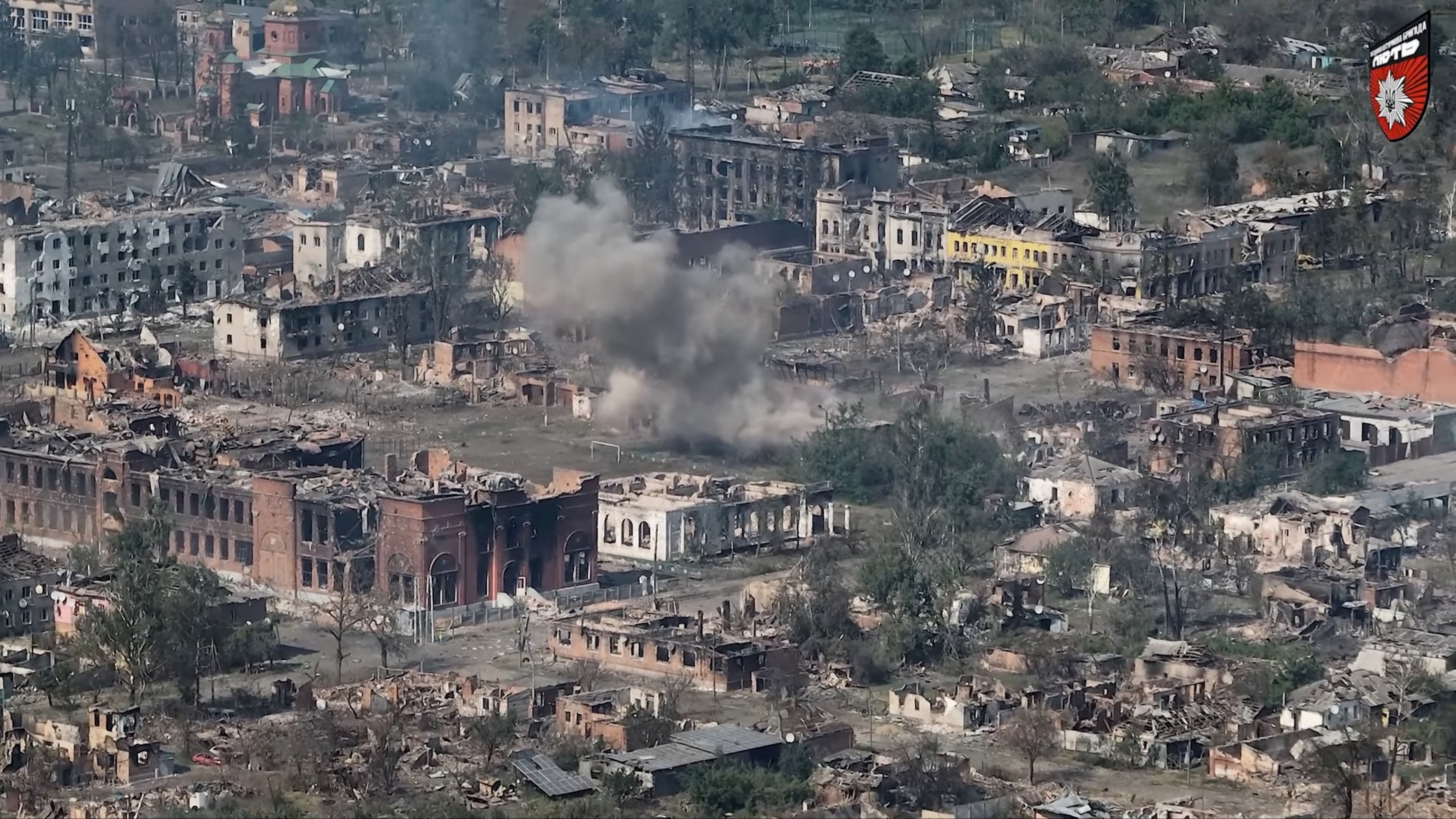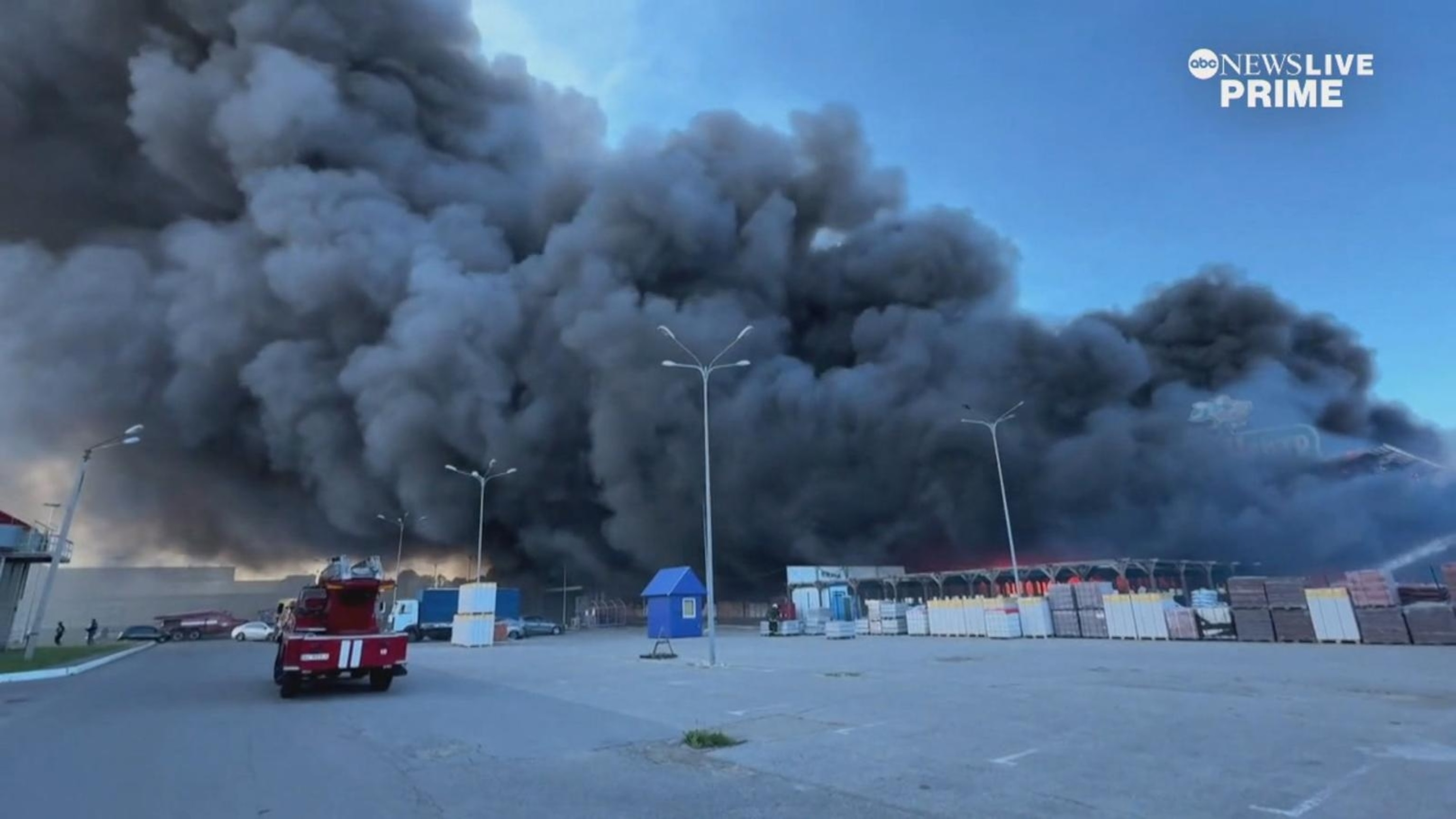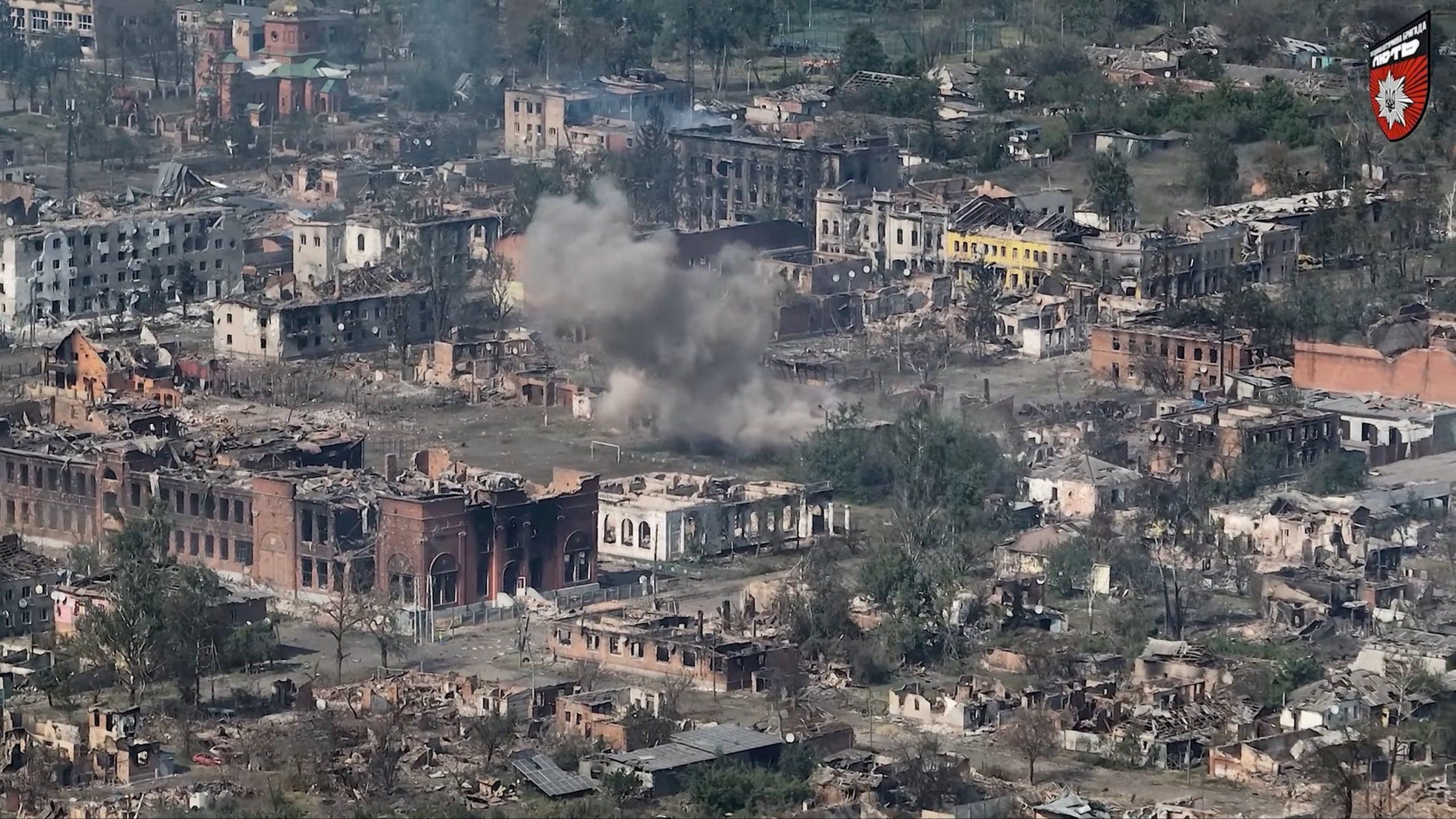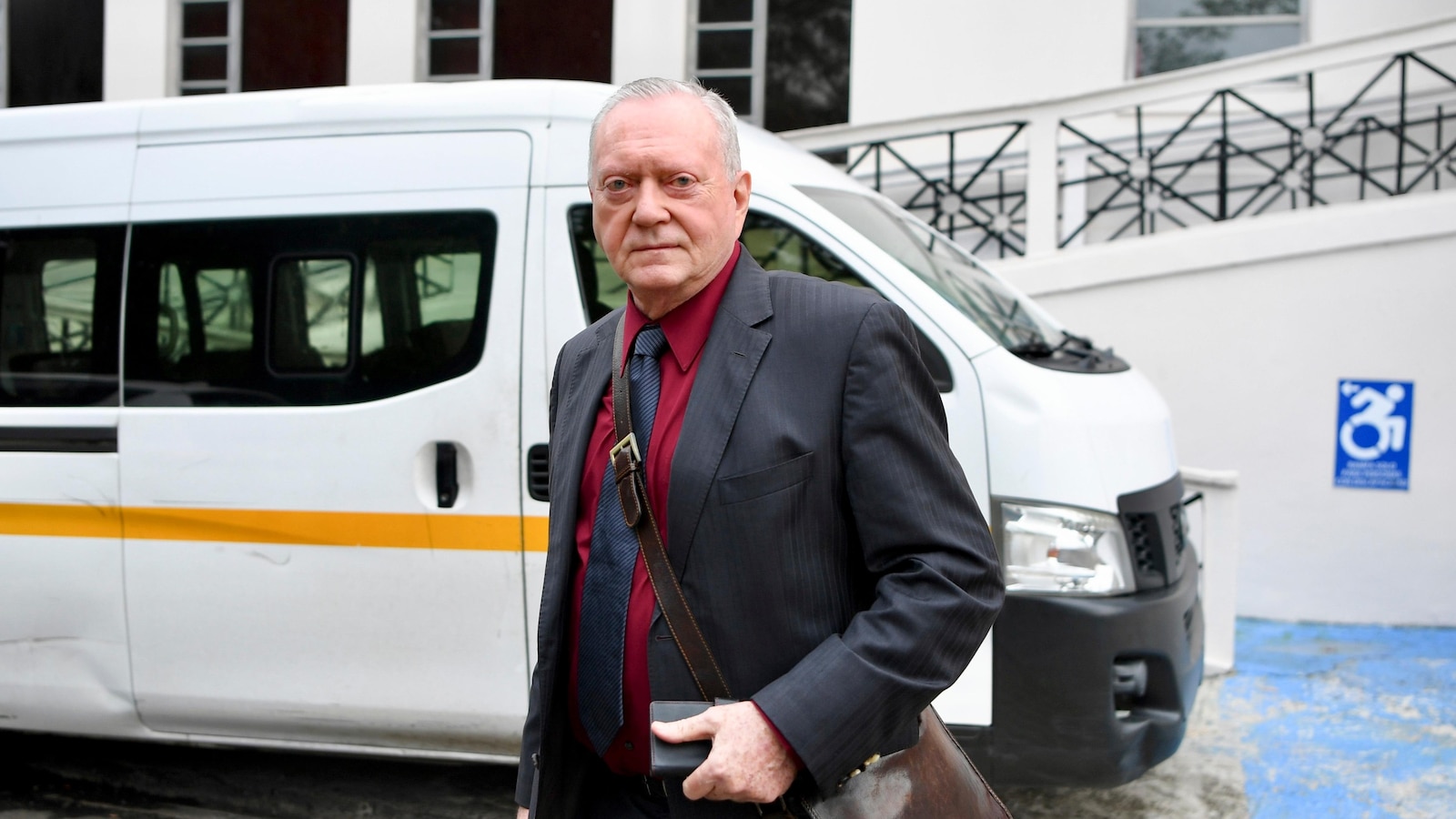It can be difficult to sleep in Kharkiv. Ukraine’s second-largest city is now under continuous attack, its residents waking many nights to the sounds of huge blasts.
Less than 20 miles from the border with Russia, Kharkiv has become known around the world as a symbol of Ukraine’s resistance.
Two years ago, Ukraine drove Russian forces back from the city. But things have changed. Russia bombs the city most days and last month launched a huge new offensive toward Kharkiv.

A drone view shows damaged property, amid Russia’s attack on Ukraine, in Vovchansk, Kharkiv region, Ukraine, from a video released on June 2, 2024.
United Assault Brigade of the National Police of Ukraine via Reuters
Ukrainian officials and residents fear, that unable to seize it, Russian President Vladimir Putin may be seeking to make the city — once home to 1.5 million people — unlivable.
“They’re trying to, try to get as much close as they can so they artillery can hit Kharkiv and just push away civilians trying to make them exhausted mentally and physically and, you know, like make Kharkiv empty more and more and more empty every day,” Roman Kachanov, a fire chief with Fire Station 11, said. “That’s what I’m afraid of.”
But despite the continuous attacks, its people try to keep ordinary life going.
“People just have a normal life knowing that every day, somewhere bombs will hit and maybe kill them, maybe not,” Kachanov said. “So this is life in Kharkiv.”
Kachanov and his team have been responding to Russian strikes for more than two years. They tackle blazes and rescue survivors from the rubble, in a relentless battle that intensified again over the last two months.
“I think me and a lot of other Ukrainians who are still here, who are still in Kharkiv, if we will be thinking negative, it will make our condition even worse,” Kachanov said. “I’m trying to stay positive.”
Kachanov decided to send his wife and daughter abroad for safety after the full-scale invasion, and they have remained there since.
“A lot of us separated from their families, a lot of divorces, a lot of everything,” Kachanov said. “So that’s hard. Emotionally hard. Not emotionally hard because of war, because of dead, injured people. Even [we got] used to this one. Yeah. Sometimes you have some stuff in your head. Maybe you need to speak with the guys with a beer. Maybe cry a bit.”

VIDEO: 2 years after pushing Russia back, Kharkiv faces barrage of attacks
ABCNews.com
Since 2022, seven firefighters have been killed in Kharkiv, and nearly 50 have been wounded, according to local authorities. Firefighters also say Russian troops frequently target sites a second time once first responders arrive, a tactic known as the “double tap.”
Last month, Kachanov suffered a concussion after an explosion in a structure where he was fighting to control a fire caused by a Russian strike. He said he has also been at fires dozens of times in the past year that have been hit by a second Russian strike.
The attacks frequently disrupt the work of teachers, trainers, and other essential workers. Adapting to them often means having to move life underground. Last month, Kharkiv opened its first purpose-built underground school, located 16 feet below ground. For the kids here, it means they can attend in-person classes for the first time in more than two years.
“We started in distance learning for two years, and now our children can just sit at the desk, they can speak to each other, you can see that they are smiling, they are happy to be here, and they feel safe here,” Olga Grigorash, a teacher at the school, said.
Local volunteer groups have also stepped in to provide humanitarian assistance, and helping with the evacuation of civilians from towns and villages closer to the frontline. Maria Zaitseva, the founder of the charity, Unbreakable Kharkiv, distributes humanitarian aid and helps evacuate people from combat areas.
Last month, Zaitseva decided to evacuate her own children to Germany.
“This summer I decided that it would be safer for my children to stay with my parents during the holidays,” Zaitseva said. “Because Kharkiv is being destroyed. Hits on civilian targets, shopping centers, residential areas. It is very dangerous.”
Amid fears of a Russian breakthrough, the Biden administration in June agreed to begin allowing Ukraine to use American weapons to strike back across the border inside Russia.
That has let Ukraine push Russian missile launchers farther away from Kharkiv, and in the past week the bombing in Kharkiv has notably eased, residents said.
“Things in Kharkiv are quieter,” Zaitseva said. “A lot quieter since our international partners allowed Ukraine to hit inside Russia. And we have results — in Kharkiv it’s better. It would be even better if we were allowed to strike at Russian aircraft.”
In recent weeks, the city of Kharkiv in eastern Ukraine has been facing a new wave of attacks, just two years after successfully pushing back Russian forces in a fierce battle for control of the city. The attacks have raised concerns about the stability of the region and the potential for further escalation of violence.
Kharkiv, Ukraine’s second-largest city, has been a key battleground in the ongoing conflict between Ukrainian forces and Russian-backed separatists in the eastern part of the country. In 2014, Russian forces launched a major offensive in an attempt to seize control of the city, but were ultimately repelled by Ukrainian troops and local volunteers. The battle for Kharkiv was one of the turning points in the conflict, and the city has since become a symbol of Ukrainian resistance to Russian aggression.
Despite the defeat of Russian forces in 2014, tensions in Kharkiv have remained high, with sporadic clashes between Ukrainian troops and separatist fighters continuing to this day. The recent wave of attacks on the city has raised fears that the conflict could once again escalate into a full-scale military confrontation.
The attacks have targeted key infrastructure and government buildings in Kharkiv, including a military base and a police station. Several civilians have also been killed or injured in the violence, adding to the toll of the conflict on the city’s residents.
Ukrainian officials have blamed the attacks on Russian-backed separatists, accusing them of trying to destabilize the region and undermine Ukraine’s sovereignty. Russia has denied any involvement in the attacks, but Western leaders have expressed concern about the situation and called for a peaceful resolution to the conflict.
The renewed violence in Kharkiv comes at a time of heightened tensions between Russia and Ukraine, with both sides accusing each other of violating a fragile ceasefire agreement that was brokered in 2015. The conflict in eastern Ukraine has already claimed thousands of lives and displaced millions of people, and there are fears that the recent attacks on Kharkiv could lead to a new round of bloodshed.
As the people of Kharkiv once again find themselves caught in the crossfire of a bitter conflict, they are calling for an end to the violence and a return to peace. The city’s residents have shown remarkable resilience in the face of adversity, but they are growing increasingly weary of the constant threat of war hanging over their heads.
It is clear that a lasting solution to the conflict in eastern Ukraine will require a concerted effort by all parties involved to find a peaceful resolution. The people of Kharkiv have already shown that they are willing to fight for their freedom and independence, but they also deserve to live in peace and security. It is up to the international community to support their efforts and help bring an end to the violence that has plagued their city for far too long.



